The Power Ball
Mid-winter in Grimsby is not necessarily the time or place I expected to experience one of my most memorable natural encounters! It was late afternoon on the 16th December 2021. I had just finished a bird survey on the south side of the Humber Estuary but I was going nowhere. The tide was rising and the sun was setting across a vast landscape bursting with life and awash with colour.
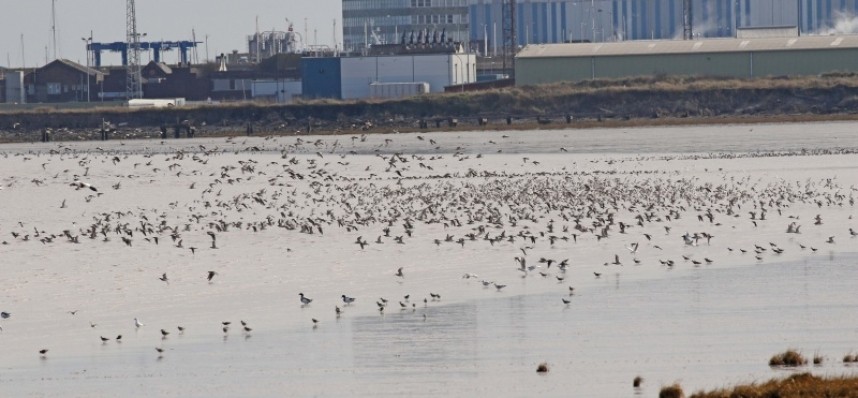
Thousands of waders at Pyewipe Grimsby © Richard Baines
Thousands of wading birds were being pushed higher up the tide line by the rising water. Black-tailed and Bar-tailed Godwits, Dunlins, Redshanks, Curlew, Grey Plover and Lapwings created a dense mass of bodies over the vanishing mud. Every single bird was feeding for as long as possible, jostling for position within a tightening world.
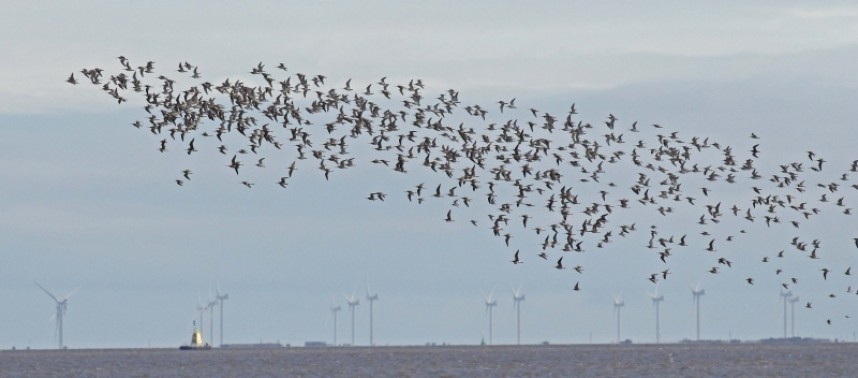
Bar-tailed Godwits reach for the sky © Richard Baines
I was waiting for that special moment, lift off! This time last year I was in the right place at the right time to see thousands of Godwits swarming around the mud and I was hoping for another opportunity to photograph these amazing birds. But in typical form nature had other ideas, there was no Godwit flight, this time it was the turn of Red Knot to steal the show.
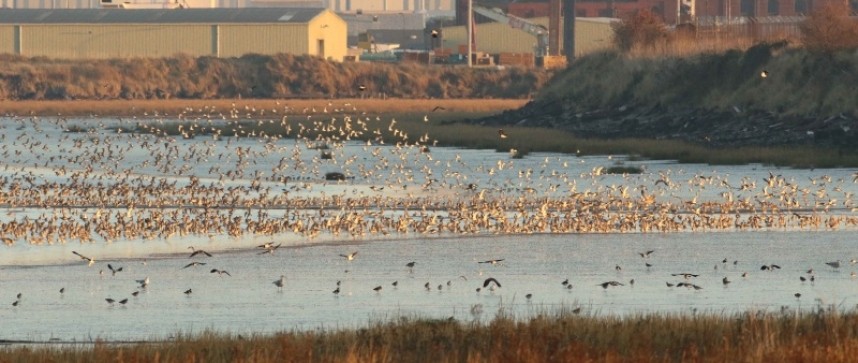
Lift Off for the flock of Red Knot © Richard Baines
At 1601 a group of Knot, I estimated around 200 birds, took off and flew low across the scene. They twisted and turned in an open flock performing tight manoeuvres always close to the water or mud.
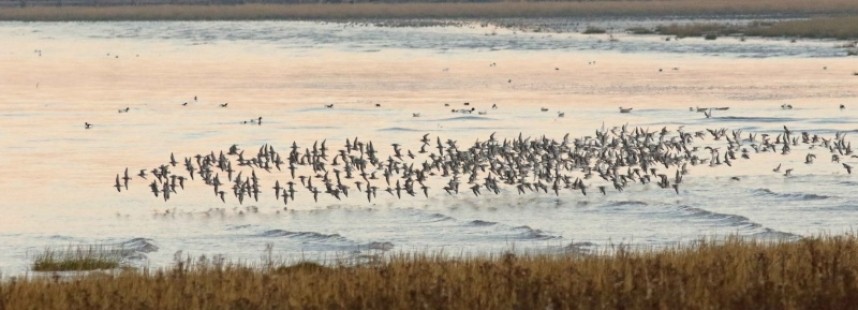
Forming the flock © Richard Baines
On occasion the flock broke up into smaller groups before very quickly coming back together, tighter and closer, then suddenly they would break up again, each movement at speed almost touched the waves.
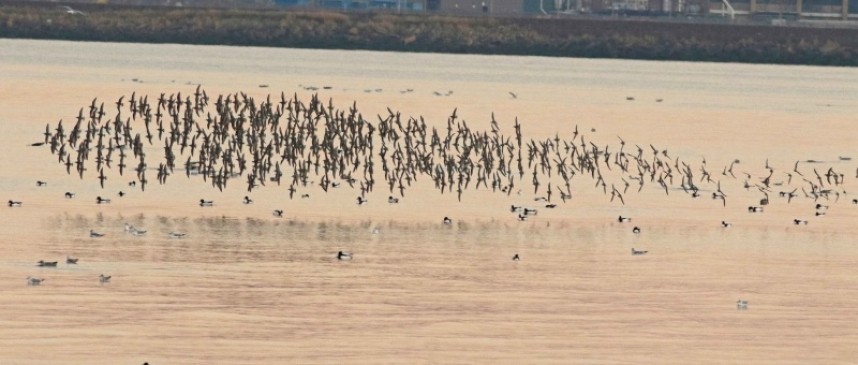
Twist and turn skimming the waves © Richard Baines
Then a change as the flock moved higher, no break ups this time as the space between individual birds was being reduced.
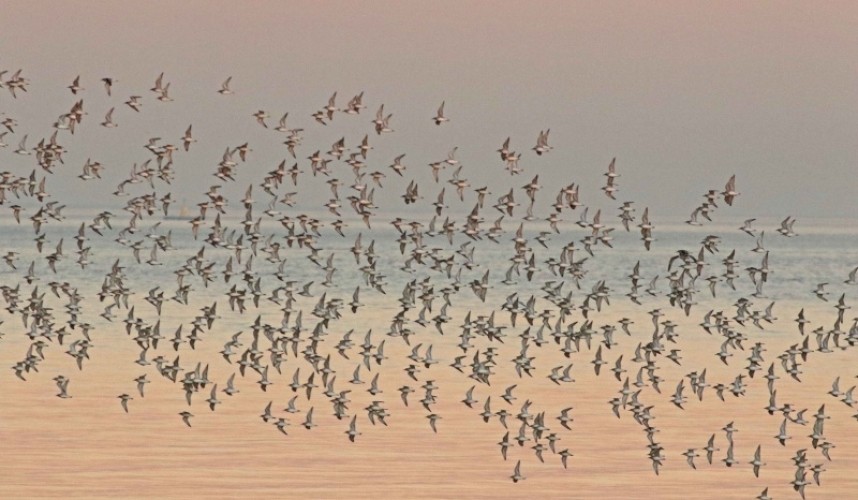
Gaining height © Richard Baines
Shortly afterwards the flock moved further away over the outer shoreline gathering speed and height.
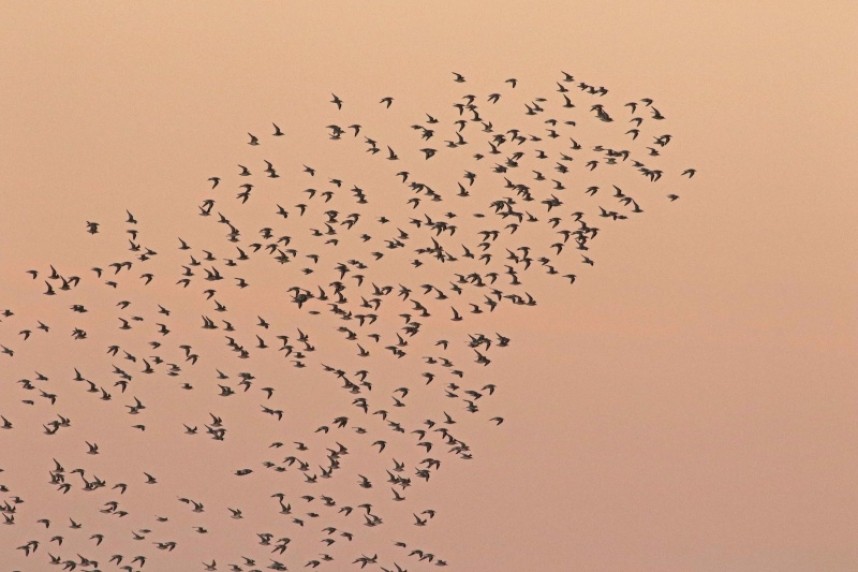
Moving away © Richard Baines
Then what I can only describe as a ‘power ball’ of birds formed. This amazing structure moved as one. No murmuration, no distraction. These birds knew exactly where they were going, they were on the move across the estuary and within no time at all they had gone. They left me in awe and hoping I captured some of the experience in my photos.
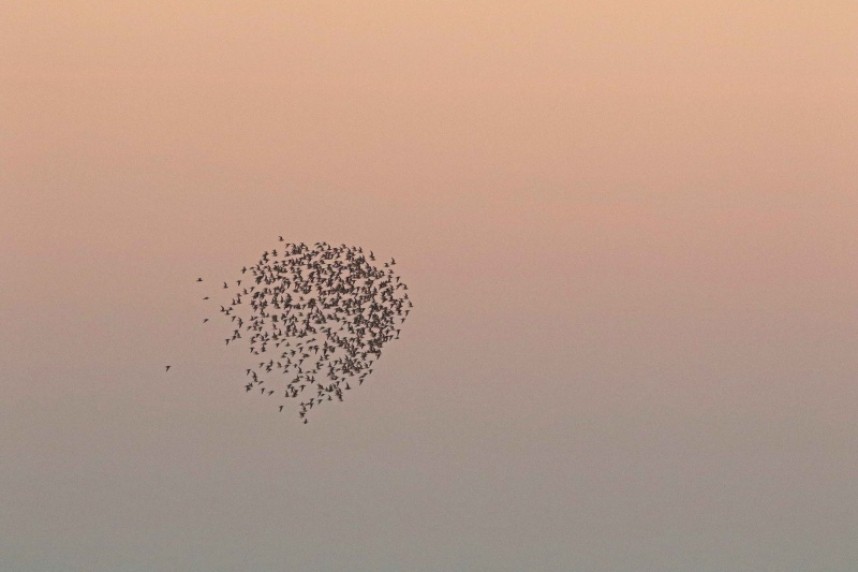
The Power Ball. Hundreds of Red Knot form a tight ball and power their way across the Humber Estuary at sunset © Richard Baines
When I checked, my last view of the flock was at 1629. The whole performance took 28 minutes from lift off to power ball. At no point was the flock disturbed by predators or people, I remember thinking wow! this was as natural an experience as I could have wished for. Self-organising collective behaviour at its best. At home I tried to count individual birds on my screen, I got over 500 and I had not even photographed the whole flock!
It must take an incredible amount of high energy practise and amazing skill to get this right. Sensory functions and flight mechanics all working overtime and at great speed. Acting together, these birds were able to fly faster, navigate more effectively and better protect themselves from predation. The results of thousands of years of adaptation. I am now slightly obsessed with learning more about flock dynamics. I am sure I can do that but finding another power ball may be more difficult…
Richard Baines
Yorkshire Coast Nature



 Back to Blog
Back to Blog
